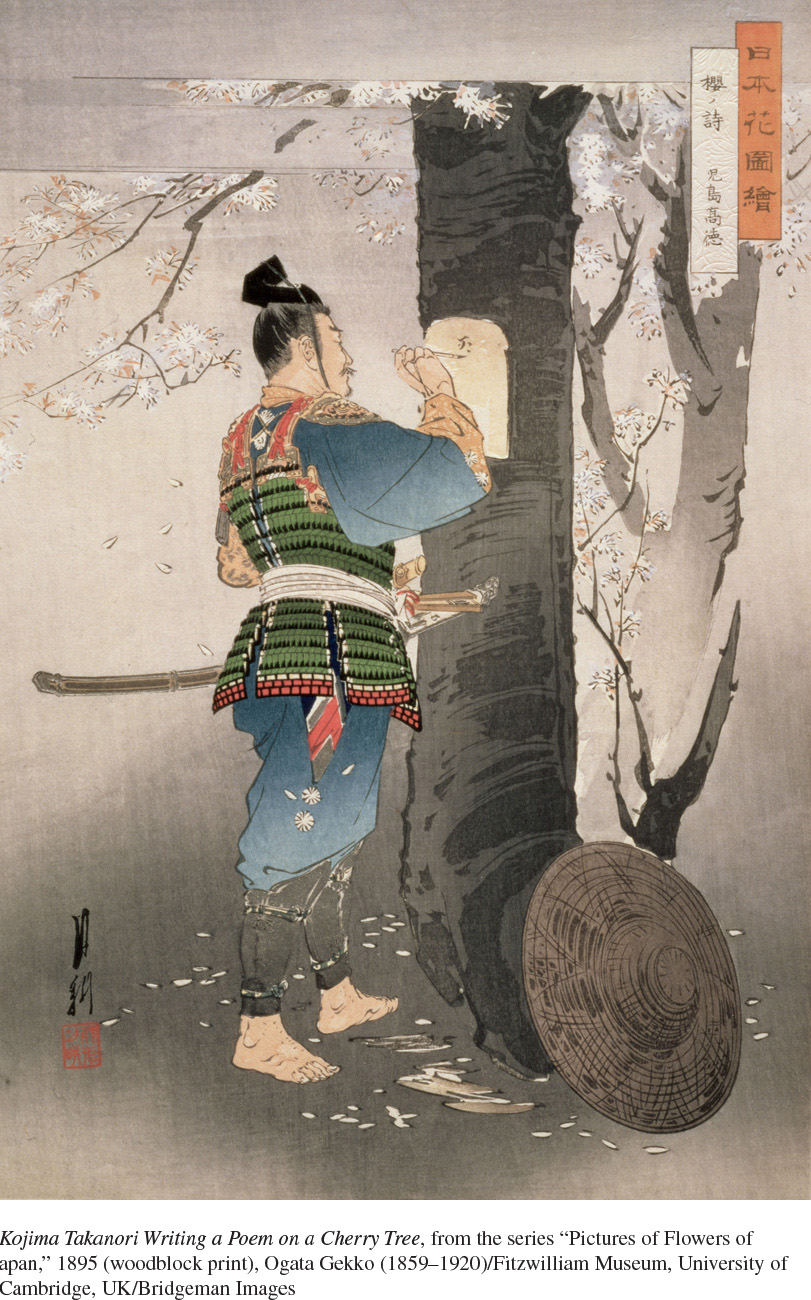Source 8.6
Samurai and the “Arts of Peace”
Beyond their skills in military and political matters, samurai were expected to master the arts of peace as well as those of war. According to a leading samurai of the sixteenth century, such a person is “renowned for his elegant pursuits, he is a complete man combining arts [bun] and arms [bu]. A man of nobility . . . he was a ruler endowed with awesome dignity and inspiring decorum. . . .
This woodblock print shows a loyal and probably mythical fourteenth-
Questions to consider as you examine the source:
- How does this image fit with your perception of samurai warriors? Compare this depiction of a samurai with the one in the main text.
- In Source 8.5, Imagawa writes, “As you do not understand the Arts of Peace your skill in the Arts of War will not, in the end, achieve victory.” How does this image help you understand Imagawa’s statement?
- In what respects are samurai to be models of a “complete man”?
Samurai and the “Arts of Peace”

Notes
- Yoshiaki Shimizu, ed., Japan: The Shaping of Daimyo Culture, 1185–
1868 (Washington, DC: National Gallery, 1988), 78.